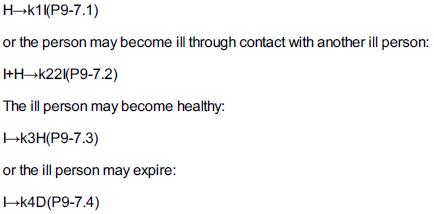As the final edits to the Sixth Edition were being made, the coronavirus pandemic struck and it
Question:
As the final edits to the Sixth Edition were being made, the coronavirus pandemic struck and it was decided to expand Problem P9-7 and apply it to the pandemic. (Mayur Tikmani, Devosmita Sen, Manjeet Singh, and Jagana Janan Sai participated in developing this problem.)
We will start the modeling after 770 people have been infected. Let H = Healthy, S = Susceptible, I = Infected, D = Died, and R = Recovered. Treat each of the following interactions as an elementary reaction. The first reaction could result from a healthy person contacting the virus on a surface.
Problem P9-7
Consider the application of the PSSH to epidemiology. We shall treat each of the following steps as elementary, in that the rate will be proportional to the number of people in a particular state of health. A healthy person, H, can become ill, I, spontaneously, such as by contracting smallpox spores:
Application of the above sequence to the 2020 Coronavirus Pandemic can be found on page 737.
a. Derive an equation for the death rate.
b. At what concentration of healthy people does the death rate become critical?
c. Comment on the validity of the PSSH under the conditions of Part (b).
d. If k1 = 10–8h–1, k2 = 10–16 (people·h)–1, k3 = 5 × 10–10 h–1, k4 = 10–11 h–1, and Ho = 109 people, use Polymath to plot H, I, and D versus time. Vary ki and describe what you find. Check with your local disease control center or search online to modify the model and/or substitute appropriate values of ki. Extend the model, taking into account what you learn from other sources (e.g., the Internet).
Step by Step Answer:






